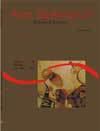Influence of different luminosity levels on the performance of Jundiá larvae (<em>Rhamdia quelen</em>) (Quoy and Gaimard, 1824) (Pisces: pimelodidae)
Abstract
The objective of the study was to verify the effect of three luminosity levels (T1=1.2 lux; T2=17 lux and T3= 20 lux) on the growing and survival of jundiá larvae (Rhamdia quelen), during 3 rearing weeks in a water-reuse system. During the first experimental week, the larvae were fed with Artemia franciscana nauplii. From the eighth through the twelfth day of the experiment there was a gradual reduction of nauplii feeding. During and after this period, the larvae received ad libitum dry food with 41% of CP and 4,293kcal gross energy/kg. The results showed that the 24-hour dark environment presented better results of standard and total length on the 14th and 21st days, however, without significant differences in the intermediate luminosity level. In relation to weight and product weight versus survival, significant differences between the three treatments were observed, being the best results obtained in T1, followed by T2 and T3 respectively. No significant differences in relation to survival between the treatments were observed. The specific growth rate was of 23.75; 22.82 and 21.90% per day, respectively for T1, T2 and T3 during the 21 days of experiment.Downloads
Download data is not yet available.
Published
2008-07-17
How to Cite
Behr, E. R., Radünz Neto, J., Tronco, A. P., & Fontana, A. P. (2008). Influence of different luminosity levels on the performance of Jundiá larvae (<em>Rhamdia quelen</em>) (Quoy and Gaimard, 1824) (Pisces: pimelodidae). Acta Scientiarum. Biological Sciences, 21, 325-330. https://doi.org/10.4025/actascibiolsci.v21i0.4446
Issue
Section
Biology Sciences
DECLARATION OF ORIGINALITY AND COPYRIGHTS
I Declare that current article is original and has not been submitted for publication, in part or in whole, to any other national or international journal.
The copyrights belong exclusively to the authors. Published content is licensed under Creative Commons Attribution 4.0 (CC BY 4.0) guidelines, which allows sharing (copy and distribution of the material in any medium or format) and adaptation (remix, transform, and build upon the material) for any purpose, even commercially, under the terms of attribution.
Read this link for further information on how to use CC BY 4.0 properly.
0.6
2019CiteScore
31st percentile
Powered by 

0.6
2019CiteScore
31st percentile
Powered by 











1.png)




3.png)













